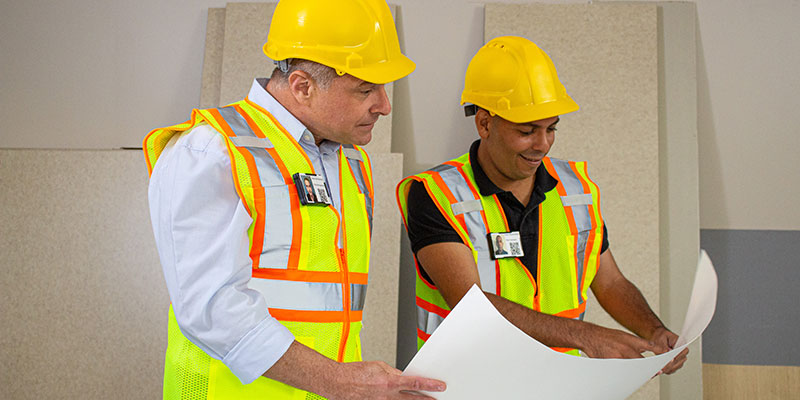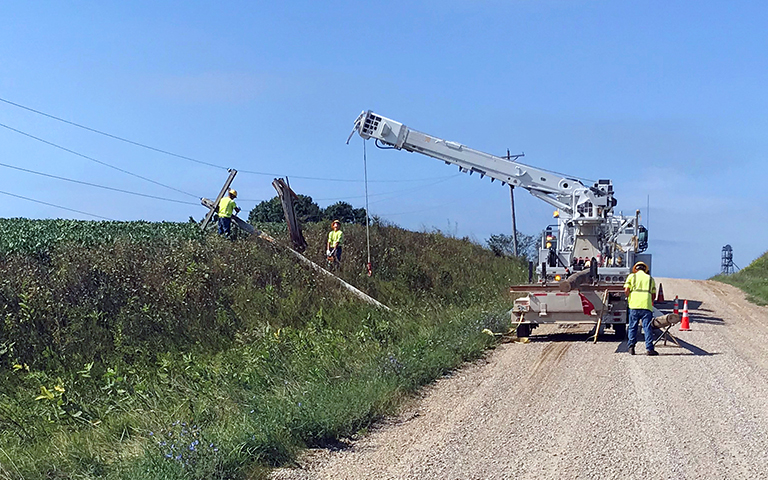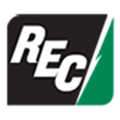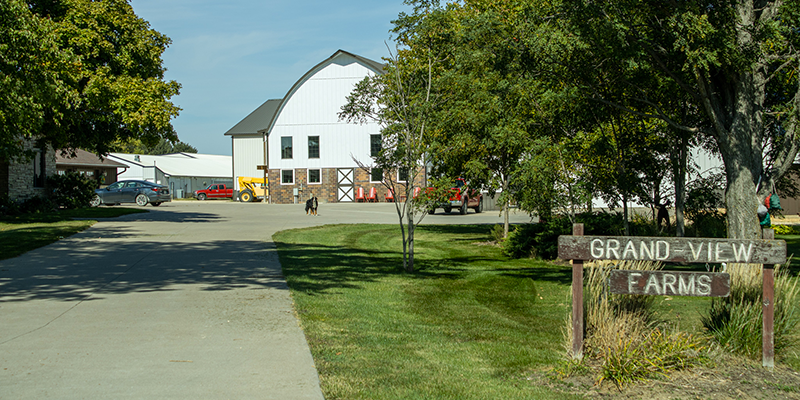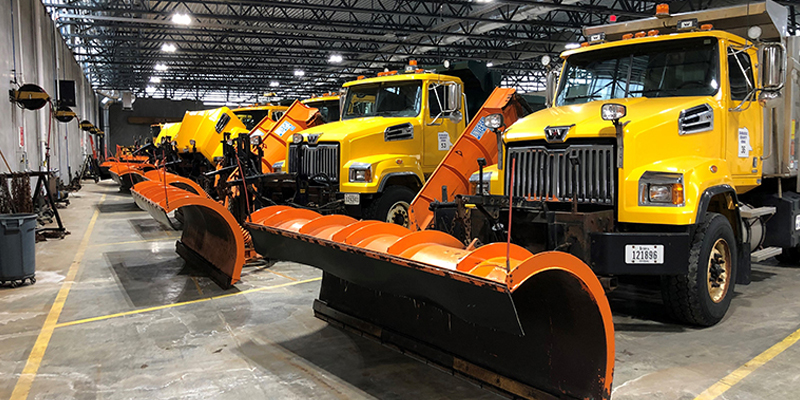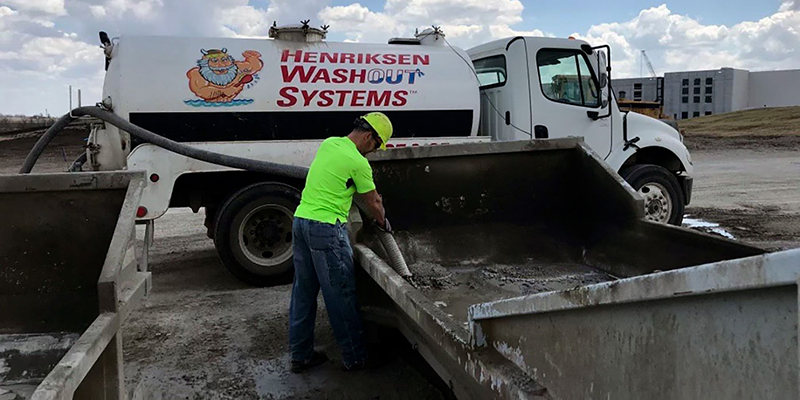READ THE FULL STORY
How can your organization duplicate these incredible results?
Get details on how TIP REC:
- accomplished its goals
- invested money wisely
- reinvested in mobile technology by partnering with UScellular® for wireless solutions
Just five years ago, T.I.P. Rural Electric Cooperative (TIP REC), a member owned electric utility serving 10 counties in east central Iowa, relied on paper—service orders, timecards and maps—to conduct business. Technicians used an often-outdated map book in their truck to locate meters. In the case of an outage, office staff might radio or call a technician in the field to advise them only where to start looking.
Today TIP REC uses cellular-powered tracking devices and modern tablets powered by UScellular to quickly identify the exact location of an outage and service it immediately, saving considerable time and effort, plus decreasing outage times.
Bringing Change with Technology
Nate Hopwood joined TIP REC five years ago and quickly set out to make tech upgrades to better serve members. “It was my big major undertaking to get this implemented,” he said. After the IT manager deployed tablets for each of the field technicians, maps became available electronically and were updated every night. Techs could see real-time member data and attributes such as meter consumption and contact information to quickly assess a situation.
“We have an app that accesses mapping and account information,” Hopwood said. “I can identify any structure in the system and pull up every nut, bolt, assembly and conductor attached to that pole. If I want to pull up a meter, I can identify the transformer size, customer it serves, billing data, contact data and outage graphics. So, when we have outages and those meters are off, we can, from the truck, pull that up and see what’s off and where to start troubleshooting it,” Hopwood said.
Service orders and timecards are dispatched, completed and submitted electronically as well, eliminating a previously inefficient manual process and time scrambling at the end of the month for missing information.
Hopwood said the tablets also give field techs the ability to troubleshoot and make decisions on their own. “The lineman in the truck knows the system and how the electrons flow. They do not need me as the IT guy or a customer service rep trying to interpret that data from the office and guiding them. The UScellular technology has enabled them to do their jobs better,” he said.
Each tablet has Office 365, and Hopwood says they use Microsoft Teams to communicate to field staff. “We were using them for meetings; it made our business very adaptable through the pandemic. We were a leg up on some of our peers because the technology was already in place,” he said.
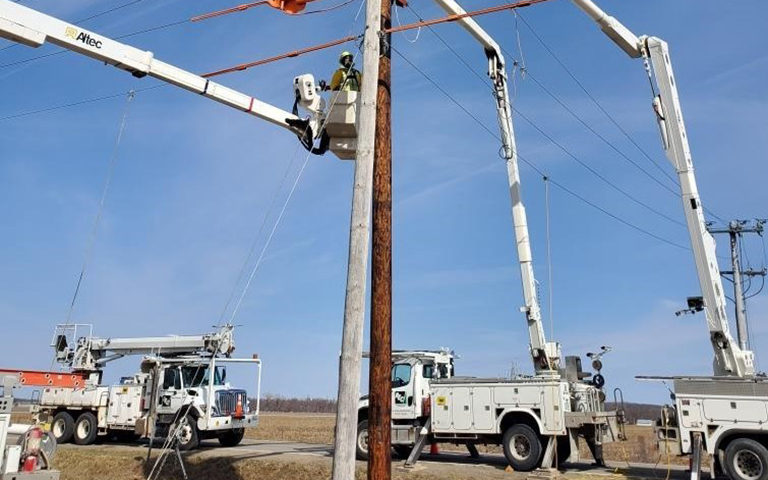
Changing out an electric pole
Improving Asset Tracking
Next, Hopwood worked with UScellular to upgrade its asset tracking system. He installed GPS tracking, devices in each of their 17 fleet vehicles last year. It integrates with a workforce management system that provides information on electrical lines, customers, health of lines and status. It also always lets them know the location of the drivers.
“We had an existing tracking system built into our FM radios. That system was antiquated and needed replacement. It was also inherently insecure,” he explained.
Hopwood reported that their radio communication infrastructure, including tower sites and repeaters, needed continuous upkeep. Additionally, their GPS tracking system, which was integrated into the radio system, relied on an internal server that was prone to security vulnerabilities. This made the network susceptible to unauthorized access, posing a potential threat to the network’s security. This solution, developed in the early 2000s, was no longer sufficient for today’s modern security standards.
“Our industry is a primary target for cyberattacks on a daily basis.” The state provides a hosted solution to provide radio services, but it does not offer vehicle tracking, so he had to find a third-party. “We knew of several solutions, but because we have such a good relationship with UScellular—and I had previous exposure to GPS tracking—it was just a hand-in-glove natural fit that we should look at implementing something cellular in the trucks that would pair nicely with our system.
“The GPS system used with UScellular connectivity utilizes a protocol that allows us to put the trucks on our map of the system. In one pane of glass we can see mapping and system data and can overlay the trucks right onto the map. I can look at an outage on our system, including the weather overlay during an ice storm, and see where our trucks are. It fits nicely,” he said.
Using tracking provides the utility with a real-time location for the affected meters and the truck. “When we have an outage, we want to know who is where and we can do that instantaneously.”
Increasing Efficiency and Customer Service
Before tablets and tracking, Hopwood said he would have to open apps in the office via the internet, which was insecure. “We didn’t like that option. And the guys in the trucks couldn’t see each other. Now they can. And we’re more efficient. There is no doubt about it.”
Hopwood said the tech upgrades have impacted the utility Coop, but not necessarily monetarily. “I wouldn’t characterize it as saving money, but we are spending wisely. We’re maximizing the investment we have made in technology and adding value to our members—our customers, by investing in these solutions. We can provide a higher level of service because we’ve spent the money on these systems,” he said.
Like a mechanic, he only hears when something is broken. And it has been quiet. “When our customer service reps aren’t fielding complaints, we know that our systems are operating well.”
Hopwood has witnessed more results. “We’re plowing value back into our services and enabling and empowering our employees to do things on their own. In today’s employment market that’s huge.
“Our employees in the field are not dependent upon people in the office that don’t know the lineman’s job. They can make these decisions on their own and we encourage them to. The more information we can provide at that endpoint—that last mile in the truck is what is adding value to the member,” Hopwood said.
Future Opportunities to Employ Technology
The best is still to come, according to Hopwood who has dozens of ideas on ways UScellular Business solutions can improve customer service and employee safety. One such plan is to upgrade their automated meter infrastructure in the next few years. The eight-year-old system with another carrier does not provide the cooperative with the data or pricing structure they require to be the most productive, he said.
Saving More Trees
Tablets not only benefit linemen in the field. Hopwood said board members also use tablets for meetings and document delivery. TIP REC delivers board packets electronically but used to mail a huge packet every month.
“It could be 100 pages some months, which means we had to get the board packet out 10 to 14 days ahead, so they had time to receive and read it. Now we’re providing fresher information closer to the board meeting and can refresh data during a meeting. “But it’s also made it pandemic proof. It has allowed us to get an email address for each board member and provide communication channels for those folks,” he said.
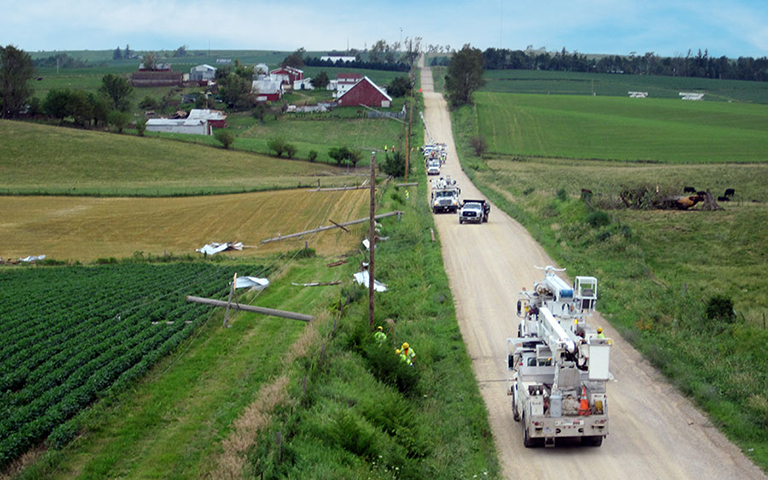
Repairing poles blown down in a wind storm
Why UScellular®
Hopwood simply states that he likes UScellular, adding that he has worked with the carrier for 23 years.
“I have always had great customer service, great contacts, great people to work with. The few times I have had to go to another carrier because I am required by a vendor, I just am reminded how crappy their customer service is and working through an 800 number or a chat bot just to talk to somebody to get something going is just so maddening,” he said.
“When I was doing a lot of homework earlier in my career at another company, I could call my UScellular rep any time and she was amazing and that whole team and business support behind that 800 number made it really easy to operate on a day-to-day basis. Now with Melissa Chapman and Dave Plym helping with the account, it is just so easy. It’s about support, not about the devices.”
“It’s more of a partnership,” Wireless Solutions Architect Plym added. “It is the open dialogue working together that really pays off. We have constant communication. Nate made us aware of the new facility being constructed where they will move their offices, so we will be installing an in-building system to ensure that the user experience within that facility works very well.”
“It helps that the UScellular network is the strongest in our area, but it’s about the support. I reach out when I need help. I get a response immediately,” Hopwood said.




